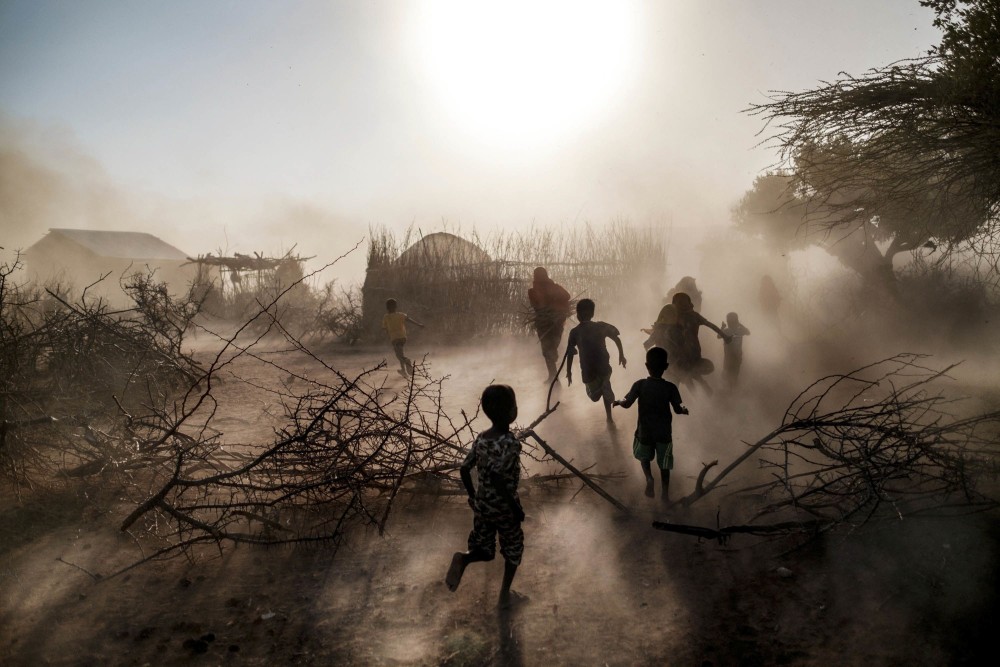The Earth’s climate is changing—oceans are warming, glaciers are melting, and extreme weather events are becoming more frequent and intense. These changes threaten all life, with climate change considered the “biggest health threat facing humanity” by the World Health Organization (WHO).
Microbes, like humans, are not immune to these environmental changes. Microbes are already adapting to the changing climate, causing serious implications for society. Scientists are investigating whether microbes contribute to global warming and what the implications are for the survival of the planet and all its inhabitants, including humanity. This crucial debate is revisited in this article to widen awareness.
Climate change can disrupt microbial communities, affect greenhouse gas production, and increase plant and animal pathogens, impacting food production and human health. Conversely, microbes can help mitigate climate change effects. Understanding the role of microbes in climate change is crucial for protecting planetary health.
Scientists from various fields, including ecology, microbial engineering, and medicine, are conducting important research and developing microbe-based solutions to address these challenges.
Earth’s interior is not barren. In fact, a majority of the planet’s microbes, perhaps more than 90%, may live deep underground. These intraterrestrial microbes tend to be quite different from their counterparts on the surface. They are ancient and slow, reproducing infrequently and possibly living for millions of years.
They often acquire energy in unusual ways, breathing rock instead of oxygen. And they seem capable of weathering geological cataclysms that would annihilate most creatures. Like the many tiny organisms in the ocean and atmosphere, the unique microbes within Earth’s crust do not simply inhabit their surroundings; they transform them.
Subsurface microbes carve vast caverns, concentrate minerals and precious metals, and regulate the global cycling of carbon and nutrients. Microbes may even have helped construct the continents, literally laying the groundwork for all other terrestrial life.
As a matter of caution, how life was formed remains a contentious subject that divides the scientific and theological communities roughly in the middle. Science has always toyed with the “BIG BANG” theory to explain how life came to exist and has made many attempts to replicate this theory.
So far, those efforts have proven fruitless. Any linkages to subsurface microbes as originators of life seem spurious. Even if accepted, the next question would be: who created these microbes? What process was behind their creation? Science is still seeking answers!
In the last 150 years, Earth’s average global surface temperature increased at a rate “unprecedented” for at least the last 2,000 years. While human activity is a main driver of climate change, microbes also play a major role. As the most abundant organisms on Earth, microbes both affect and are affected by a changing climate.
Newly evolved microbial activities can lead to positive or negative feedback on climate change and its effects. Understanding this feedback is vital to combating the harmful impacts of climate change on society.
Research on microbes, climate change, and society can be divided into three main areas: microbial influences on greenhouse gases, microbial adaptation to climate change, and the impacts of microbes on health and the environment.
Microbial Influences on Greenhouse Gases
Greenhouse gases are atmospheric gases that trap heat, leading to global warming. This warming accelerates food spoilage, increases disease prevalence, and exacerbates natural disasters. Microbes in soil and water contribute to greenhouse gas emissions by producing carbon dioxide (CO2), methane (CH4), and nitrous oxide (N2O).
Methane is about 25 times more efficient at trapping heat than carbon dioxide, making it crucial to lower methane levels for short-term global warming mitigation. Understanding microbial methane production is key to developing emission reduction strategies.
Over 50% of methane emissions come from human activities, especially raising livestock like cattle and sheep for meat and dairy. In the rumen, bacterial, archaeal, protozoan, and fungal microbes digest plant feedstock through fermentation, contributing to methane emissions.
Also, read: Adaptation Funding amidst the growing Climate Crisis
The rumen microbiome converts plant sugars into energy for the animal, producing methane as a byproduct that is released into the atmosphere through belching. Rumen microbes account for more than 25% of anthropogenic methane emissions.
Scientists are actively studying the rumen microbiome and ways to control methane production. An international team found that feeding cows an inhibitor of a key archaeal enzyme responsible for methane formation decreased enteric methane emissions by 30%.
Building on this observation, researchers are using omics and models to reveal how the inhibitor affects the cattle microbiome. This information will be crucial in understanding how methanogens interact with the whole microbiome so that cattle feed can be modulated to reduce the production of methane during rumination. Production and consumption of greenhouse gases occurring at the microbial level play a crucial role in determining ecosystem responses to climate changes caused by humans.
Microbial Adaptation to Climate Change
As the environment changes, so do microbes. Microbes’ fast growth rates, large population sizes, and ability to share genetic information allow them to adapt quickly to environmental variability. Changes in microbial activity, diversity, community structure, and interactions with other organisms are all shaped by climate change.
Microbes can adapt in various ways. Bacterial respiration has been shown to increase with warmer temperatures while bacterial cell size decreases. Viruses found in cooler oceans have evolved to encode proteins related to cold shock response, allowing them to survive at lower temperatures.
Warmer and drier soils, as well as warming oceans, are associated with shifts in microbial community composition, which may result in changes to carbon and nutrient cycling in those ecosystems.
Viruses that infect soil and aquatic microbes can also promote changes in microbial activity and community structure. For instance, infection of cyanobacteria by viruses called cyanophages can shut down carbon dioxide fixation during infection, resulting in greater availability of greenhouse gases to enter the atmosphere. However, more research is needed to understand the full role of the virome on microbial adaptation to climate change.
Microbes, Health and the Environment
Pathogens must also adapt to a changing environment. Warmer temperatures and environmental shifts can help pathogens and vector species expand their spatial range. For example, warmer oceans at higher latitudes in the North Sea are linked to a higher incidence of infections with Vibrio spp.
Vibrio are marine bacteria that live in warm and coastal waters and can cause diarrhea, nausea, vomiting, dehydration, and fever when ingested with contaminated seafood. As global oceans have warmed, Vibrio spp. have expanded to these warmer waters and caused more infections in areas not previously endemic.
Warmer waters are also associated with more intense hurricanes, cyclones, and flooding. Such storms can lead to increased human exposure to pathogens. Warming temperatures may also select for warm-adapted fungal pathogens, such as the opportunistic fungal pathogen Candida auris.
Thus, climate change-induced environmental shifts have profound impacts on animal and plant pathogens and human health.
Microbes as Solutions for Climate Change
Though microorganisms contribute to the negative effects of climate change, they can also help mitigate its impacts. Brajesh Singh, Ph.D., Director of the Global Centre for Land-Based Innovation and Distinguished Professor at Western Sydney University, views microbes as solutions to the problem.
“Growing evidence suggests that microbial tools can provide effective solutions for both mitigation and ecosystem adaptation to climate change,” Singh said. “For successful outcomes from this line of research and innovation, studying climate change at microbial levels is critical.”
Microbes Can Be Harnessed as Climate Change Solutions in Other Ways as Well
Bruns, a Professor of Soil Microbiology at Pennsylvania State University, highlighted that microbes that consume greenhouse gases are being investigated as solutions to counter rising emissions. Raising livestock, manure management, rice paddies, landfills and oil and gas operations are all major sources of methane.
Methanotrophs, which are bacteria and archaea that consume methane, are being investigated for their ability to reduce emissions when introduced to these methane-producing systems. By facilitating methane capture and feeding it to methanotrophs, scientists hope to reduce overall methane emissions into the atmosphere.
Since methane traps radiative heat in the atmosphere better than carbon dioxide, these microbial solutions could be a way to help mitigate the impacts of global warming and climate change on society.




